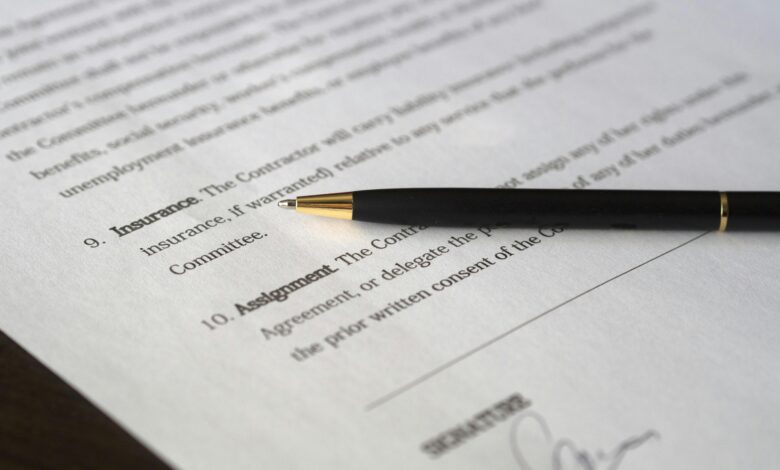What is Liability Coverage in Home Insurance? A Detailed Explanation

Home insurance is a vital safeguard for homeowners, protecting their property and finances from unexpected events. Among the various components of a standard home insurance policy, liability coverage stands out as one of the most important yet often misunderstood aspects. In this article, we’ll explore what liability coverage entails, why it matters, and how it works to protect you in different scenarios.
What is Liability Coverage?
Liability coverage is a key part of a standard home insurance policy that protects you financially if you’re held legally responsible for injuries or property damage caused to others. It provides financial assistance for legal fees, medical expenses, and damages awarded in lawsuits related to incidents that occur on your property or as a result of your actions.
For example:
- If a guest slips and falls on your icy driveway and sues you for medical bills.
- If your dog bites someone at the park, and they seek compensation for their injuries.
- If your child accidentally breaks a neighbor’s window while playing baseball.
Without liability coverage, you would have to pay these costs out of pocket, which could be financially devastating. Liability coverage ensures you’re protected against such risks.
Key Components of Liability Coverage
Most home insurance policies include two main types of liability protection:
1. Personal Liability Protection
This covers bodily injury or property damage claims made against you by third parties. For instance:
- A delivery person trips over a loose step on your porch and sustains an injury.
- Your tree falls during a storm and damages your neighbor’s roof.
Personal liability protection typically pays for:
- Medical expenses incurred by the injured party.
- Legal defense costs if you’re sued.
- Settlements or judgments awarded in court (up to your policy limit).
2. Medical Payments Coverage
This is a smaller, no-fault component of liability coverage designed to handle minor medical expenses for guests injured on your property, regardless of who is at fault. For example:
- A friend cuts their hand while helping you cook in your kitchen.
- A child scrapes their knee after falling off a swing set in your backyard.
Medical payments coverage usually has lower limits (often between $1,000 and $5,000) and is intended to resolve small claims quickly without involving lawyers or lawsuits.
How Does Liability Coverage Work?
When an incident occurs that triggers liability coverage, here’s how the process generally unfolds:
- Incident Occurs : Someone gets injured or their property is damaged due to your actions or negligence.
- Claim Filed : The injured party files a claim with your insurance company or directly contacts you.
- Investigation : Your insurer investigates the claim to determine whether it’s valid and falls under your policy terms.
- Payment : If approved, your insurer will cover eligible expenses up to your policy’s liability limits. This may include medical bills, repairs, legal fees, and settlements.
It’s important to note that liability coverage only applies to unintentional acts. Intentional harm or criminal behavior is not covered.
Why Do You Need Liability Coverage?
Liability coverage is essential for several reasons:
1. Protection Against Lawsuits
Lawsuits can arise from seemingly minor incidents, such as a slip-and-fall accident or a pet-related injury. Without liability coverage, defending yourself in court and paying any resulting damages could drain your savings or lead to bankruptcy.
2. Peace of Mind
Knowing that you’re financially protected allows you to focus on enjoying your home without constantly worrying about potential liabilities.
3. Coverage Beyond Your Property
Liability coverage isn’t limited to incidents that happen inside your home. It also extends to situations where you or family members cause harm elsewhere—for example, while traveling or participating in recreational activities.
4. Affordable Safety Net
The cost of adding liability coverage to your home insurance policy is relatively low compared to the potential financial consequences of being uninsured.
How Much Liability Coverage Do You Need?
The amount of liability coverage you need depends on your personal circumstances, including:
- The value of your assets (home, car, investments, etc.).
- Your risk tolerance.
- Any unique risks associated with your lifestyle (e.g., owning a pool, having aggressive pets).
Standard home insurance policies typically offer liability limits ranging from $100,000 to $500,000 . However, many experts recommend increasing this limit to at least $300,000 or more, especially if you own valuable assets that could be targeted in a lawsuit.
If you want even greater protection, consider purchasing an umbrella policy , which provides additional liability coverage above and beyond your home insurance limits. Umbrella policies are affordable and can add millions of dollars in extra protection.
Common Scenarios Covered by Liability Insurance
Here are some real-world examples of situations where liability coverage might come into play:
1. Slip-and-Fall Accidents
A visitor slips on a wet floor in your kitchen and fractures their wrist. They require hospital treatment and later sue you for lost wages and pain and suffering.
2. Dog Bites
Your dog bites a passerby during a walk, requiring stitches and follow-up care. The victim demands compensation for their medical bills and emotional distress.
3. Property Damage
Your child accidentally hits a baseball through a neighbor’s window, shattering glass and damaging furniture inside.
4. Social Host Liability
If you host a party and a guest becomes intoxicated, drives home, and causes an accident, you could potentially face liability claims depending on state laws.
What Isn’t Covered by Liability Insurance?
While liability coverage offers robust protection, there are certain exclusions to be aware of:
1. Intentional Acts
If you deliberately injure someone or damage their property, liability coverage won’t apply.
2. Business Activities
Injuries or damages related to running a business from home (e.g., a client slipping in your office) are generally excluded unless you have a separate business insurance policy.
3. Auto Accidents
Liability coverage for vehicles is handled separately through auto insurance, not home insurance.
4. Criminal Behavior
Any illegal activity that results in harm or damage won’t be covered.
Tips for Maximizing Your Liability Coverage
To make the most of your liability coverage, consider the following tips:
- Increase Your Limits : Opt for higher liability limits if you can afford it, especially if you own significant assets.
- Add an Umbrella Policy : Supplement your home insurance with an umbrella policy for added peace of mind.
- Mitigate Risks : Take steps to reduce the likelihood of accidents, such as installing handrails, clearing walkways, and supervising pets.
- Review Regularly : Periodically review your policy to ensure it aligns with your current needs and asset levels.
- Understand Exclusions : Familiarize yourself with what’s excluded from your coverage so you can address gaps proactively.




